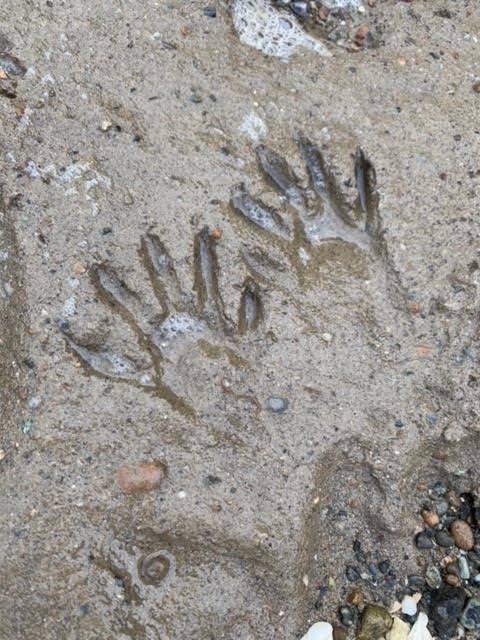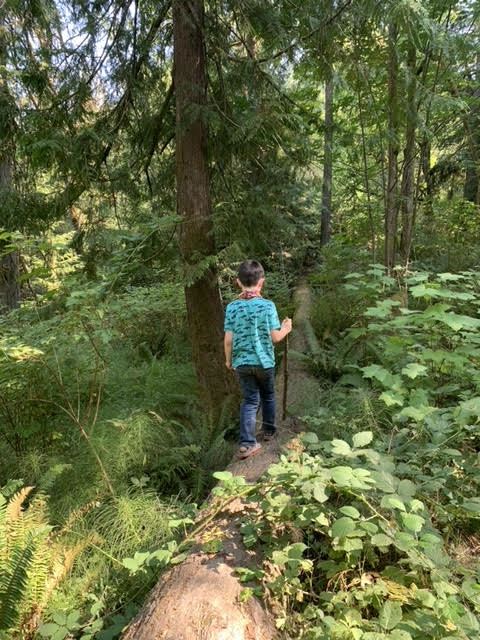Emily Bryce is a Pediatric Occupational Therapist who works with clients both indoor and out. Wait, what? Yes! Emily has been taking clients to open, outdoor spaces to grow in the never-ending experiential benefits Mother Nature has to offer. This past summer Emily and her family began work on land they purchased in the Puget Sound Region of WA state. One of the first items they built was a sensory structure beautifully tucked between hemlock trees, Douglas fir, maples, alders, and cedar trees. The structure has a large round swing, a climbing wall, and a net slung across the top where children seeking sensory input can sink into the comforting pressure sensation around them while staring up into the trees and sky. Here, her young clients strengthen their gross and fine motor sensory skills, learn the basics of risk assessment, and grow their language development when discussing their plans of how to move among the structures different play opportunities.



I recently spoke with Emily after a day seeing clients. She had met a few at the beach and recounted their adventures in the rain. Walking along the beach, the small group discovered jellyfish that has washed ashore. In their careful investigation of the creatures was an opportunity to discuss life cycles. Asking how, why, where- when observing the jellyfish strengthens children’s scientific thinking. In the same trip to the beach, clients flexed their fine motor skills and engaged in sensory input when playing with small stones to create sculptures and by making hand prints in the sand. It could be said that stone and sand play can be found inside an OT center, but the cool, wet texture of the rocks, the smell of the sea, the colors on the beach are input that strengthens sensory pathways that an indoor setting cannot match. The sticky sand on hands after making prints means children must problem solve their way out of being sandy, if they want to. All senses are richly fed here.



Emily later explained to me the benefit of natural consequences found in nature. She said that rolling down a hill in the PNW can get you drenched. Her clients must strengthen their executive functioning skills and critical thinking to decide if they want to engage with this particular aspect of outdoor play. Using inquiry based teaching methods, Emily converses with her clients regarding the natural consequences this outdoor experience offers.
Emily: Its your choice, but what do you think might happen?
Clients: I might get really wet.
Emily: Do you want to be wet?
Client: No.
This conversation and the location it is taking place in are prime examples of the Forest Kindergarten pedagogy’s benefits for not only classroom settings, but OT, PT, and even speech work with children. Flexing their executive functioning skills and critical thinking helps lay the foundation for future academic thinking. The plethora of sensory input, the opportunities to grow muscles both fine and gross, and more show that Emily’s choice to bring her clients to the wild is beneficial to all students, no matter what developmental path they are on. Can you test my theory? Just walk out the door! Please let us know what you think! Comment below. And if you would like to get into contact with Emily, please email our AFKA group email ForestKindergartenAssociation@gmail.com attn: Emily.


